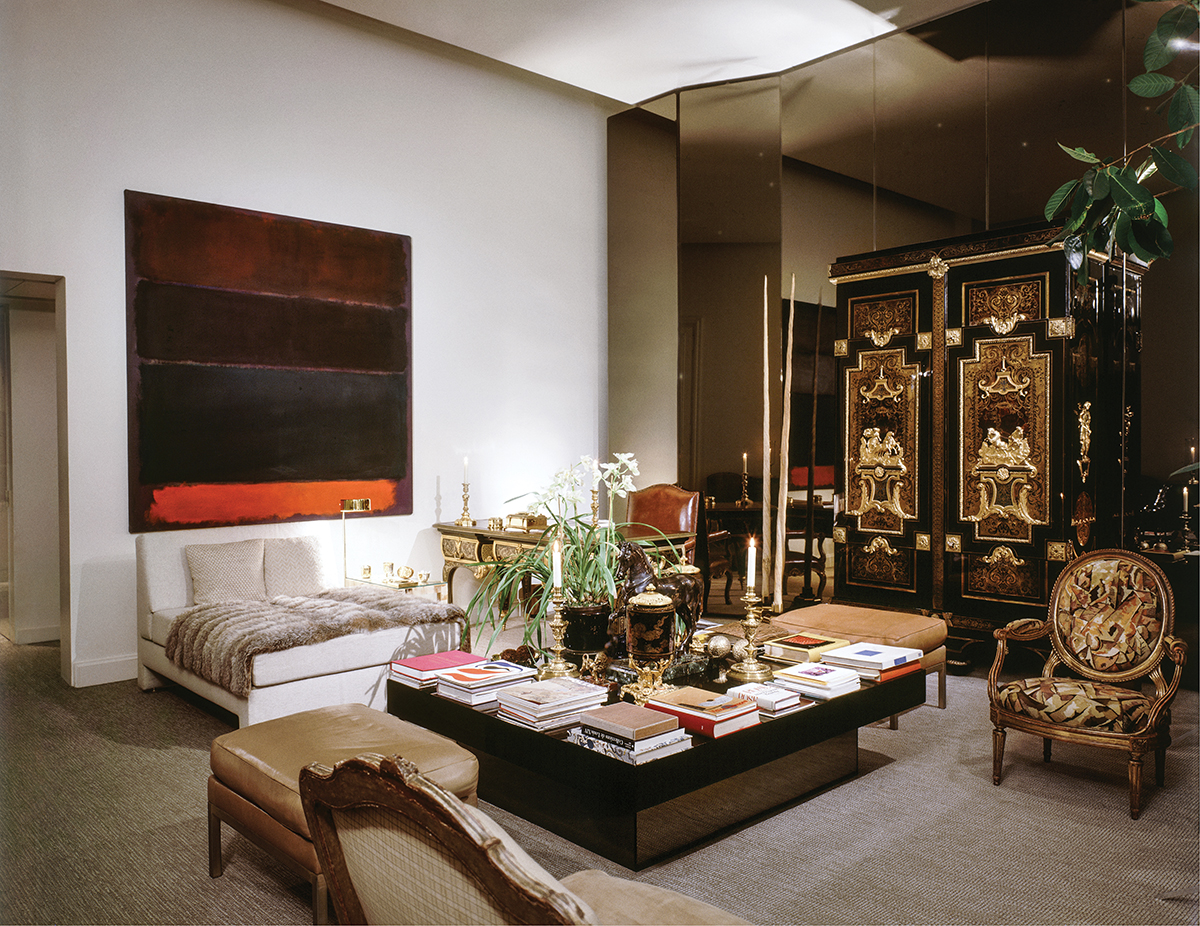
Deeda on the terrace of her house in Washington wearing the Rothko-inspired dress designed by friend and designer Hubert de Givenchy. Photo by Horst P. Horst
In this introduction to Deeda Blair’s just-released book, Food, Flowers, & Fantasy (Rizzoli 2022), author Andrew Solomon’s description of his dear friend portends a fabulous armchair adventure for readers.
Deeda, what prompted you to write this book?
Deeda: During COVID quarantine, I needed a project that would keep me busy since I had a lot of alone time. I also had a collection of beautiful, interesting, and surprising photographs of things I love—houses, gardens, architecture, paintings, sculpture, ruins, and travels. Deborah Needleman came over for lunch one day and suggested we put the different kinds of images together in an interesting way, and I ended up being quite happy with the way it looked. This book is also intended to raise money for the Deeda Blair Research Initiative for Disorders of the Brain. This rigorously reviewed program has a goal of identifying and supporting the next generation of scientists with seed funds to pursue novel and innovative research in the neurosciences.

An 18th-century Chinese screen in Deeda’s Manhattan apartment provides an exotic backdrop for a fantastical picnic prepared for a trip to visit Egyptian treasures in St. Louis. Photo by Ngoc Minh Ngo
Was there someone in your life who encouraged you in your pursuit of beauty?
I had a close friend who encouraged my interest in 18th-century France, history, furniture, works of art, and architecture. Also, my grandmother often took me to museums and the opera.
What is your favorite flower to arrange?
I love peonies with vines of sweet peas, as well as ranunculus and garden roses.

The Rothko painting that provided the inspiration for the dress was on display in the salon of Hubert de Givenchy’s Rue Fabert house in Paris. Photo by Pascal Hinou / Architectural Digest
What is your tried-and-true vessel, arrangement style, and garden style?
I love baskets, both ceramic and wicker, and I have several Sèvres cachepots. I like arrangements consisting of one type of flower mixed in with different leaves. Regarding garden style, I adore boxwoods used as hedges or parterres.
You mention in your book that you didn’t like the shapeless navy Catholic school uniforms you wore growing up. How did your limited wardrobe in school affect your approach to fashion?
My school uniforms ended up having a positive effect on my approach to fashion in that I learned to not mind wearing things over and over later in life, particularly if it’s a Chanel suit or a Balenciaga coat.

A soft, garden-style arrangement for dinner à deux references Marie Antoinette’s Petit Trianon, where the gardens were more informal than those of nearby Versailles. Photo by Ngoc Minh Ngo
In his 70s hit, “Wild Night,” Van Morrison wrote that “All the girls walk by, dressed up for each other.” I think that’s mostly true. Who do YOU dress for?
I dressed very much for my late husband, who was quite interested in clothes. But I also dress for myself.
Nancy Lancaster once said that every successful room must have a woodfire, candlelight, and cut flowers. What are your essentials for a successful room? And for a successful party?
For a successful dining room, I like to use a smaller, round table that holds four to six people and pair it with pieces such as a sofa and a bookcase. And when entertaining, I have found that beautiful tablecloths and flowers make a huge difference. I enjoy making up tablecloths of Bennison linen prints with pleated edges, and they always completely cover the table.

Deeda set a table for a fantasy meal with pastel flowers and linens reflecting her memories of Sweden and its dreamy, light-filled Haga Pavillon. Photo by Ngoc Minh Ngo
Poring over your Fantasy Menus felt like a whirlwind trip full of international delicacies. Can you choose one and describe the locale and your vision for that menu?
These Fantasy Menus just kind of fell together based on places I love. One of my favorites was inspired by a trip that wasn’t so far away—to St. Louis. The Saint Louis Art Museum was hosting an extraordinary exhibition on “Sunken Cities: Egypt’s Lost Worlds.” It featured temple ruins and monumental statuary from two islands just off Alexandria over 1,200 years ago. I had seen half of it before at a beautiful installation in the Grand Palais in Paris and was longing to see it again. Some wonderful friends knew I had not gone anywhere in ages after I had an accident. They owned a plane and asked where I wanted to go. I think they were somewhat surprised when I said St. Louis. For the flight, I planned a picnic consisting of things that travel well—the Moroccan chicken couscous was a Middle Eastern thought, and I paired it with cold beet soup. I completed the meal with a blueberry tart.

Deeda Blair and husband William, who was ambassador to Denmark, share a light moment in the embassy residence in Copenhagen.
Tell us about your husband, William, and what sort of man he was.
The best way to describe him comes straight from my book: “I had the world’s most heavenly husband. He just got me; he just got it. And he always gave me tremendous independence to pursue my interests. Independence with applause.”
Interview by Margot Shaw

Deeda Blair: Food, Flowers & Fantasy (Rizolli, October 2022) is available at Amazon. Buy the book.
More Tastemakers to Know



